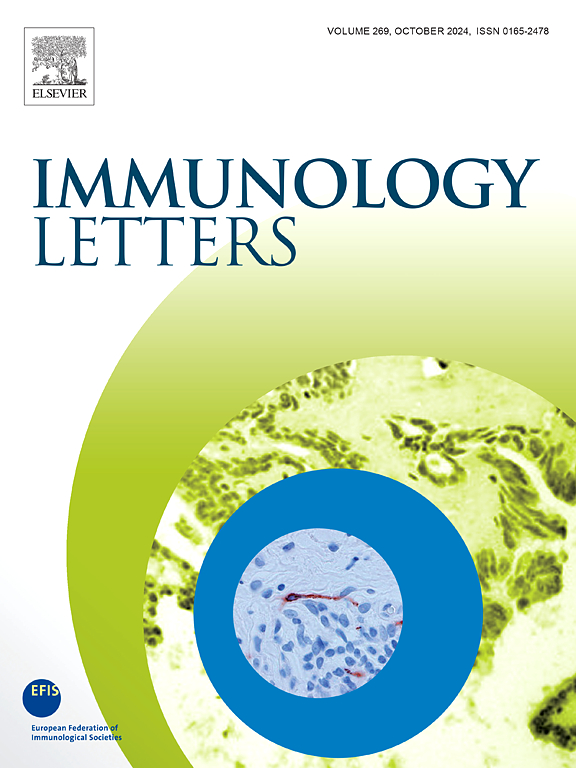Electrostatic potential is the dominant force in antigenic selection of naïve T-cells and B-cells for activation and maturation
IF 2.8
4区 医学
Q3 IMMUNOLOGY
引用次数: 0
Abstract
Peptide antigenicity can be predicted from sequence using a simple method invented by Hopp and Woods in the early 1980′s. Since then, a much clearer understanding of T-cell/B-cell signaling and maturation calls for a new understanding of the amino acid determinants of antigenicity. We show that short peptides with more charged side chains generate significantly higher titers of peptide specific antibodies in co-immunized mice. Peptide docking simulations using linearized Poisson-Boltzmann calculations of electrostatic potential show that immunoglobulins distinguish the cognate peptide sequence from randomly selected sequences at "arms length" (10–20 Å) with >70 % of alternative sequences having higher energy at this distance, consistent with the weak specificity observed for naive T-cell and B-cell receptor interactions with MHC-bound antigen. Orders of magnitude lower complexity of the state space of charged surfaces as compared to the state space of surface shapes suggests a dominant role of electrostatics in selecting naive immune cells from the population of circulating cell lines. We propose a two-stage antigen recognition process, first electrostatic and then shape-based, that explains the dominant contribution of charged residues to peptide immunogenicity.
静电电位是naïve t细胞和b细胞在激活和成熟过程中抗原选择的主导力量。
肽的抗原性可以用Hopp和Woods在20世纪80年代初发明的一种简单的方法从序列中预测。从那时起,对t细胞/ b细胞信号传导和成熟的更清晰的理解要求对抗原性的氨基酸决定因素有新的认识。我们发现,在共免疫小鼠中,具有更多带电荷侧链的短肽显著提高了肽特异性抗体的滴度。利用线性泊松-玻尔兹曼静电电位计算的肽对接模拟显示,免疫球蛋白在“臂长”(10 - 20Å)处将同源肽序列与随机选择的序列区分开来,其中>70%的替代序列在这一距离处具有更高的能量,这与观察到的幼稚t细胞和b细胞受体与mhc结合抗原相互作用的弱特异性一致。与表面形状的状态空间相比,带电表面状态空间的复杂性降低了几个数量级,这表明静电在从循环细胞系群体中选择初始免疫细胞方面起着主导作用。我们提出了一个两阶段的抗原识别过程,首先是静电的,然后是基于形状的,这解释了带电残基对肽免疫原性的主要贡献。
本文章由计算机程序翻译,如有差异,请以英文原文为准。
求助全文
约1分钟内获得全文
求助全文
来源期刊

Immunology letters
医学-免疫学
CiteScore
7.60
自引率
0.00%
发文量
86
审稿时长
44 days
期刊介绍:
Immunology Letters provides a vehicle for the speedy publication of experimental papers, (mini)Reviews and Letters to the Editor addressing all aspects of molecular and cellular immunology. The essential criteria for publication will be clarity, experimental soundness and novelty. Results contradictory to current accepted thinking or ideas divergent from actual dogmas will be considered for publication provided that they are based on solid experimental findings.
Preference will be given to papers of immediate importance to other investigators, either by their experimental data, new ideas or new methodology. Scientific correspondence to the Editor-in-Chief related to the published papers may also be accepted provided that they are short and scientifically relevant to the papers mentioned, in order to provide a continuing forum for discussion.
 求助内容:
求助内容: 应助结果提醒方式:
应助结果提醒方式:


